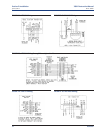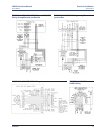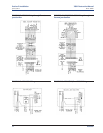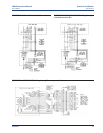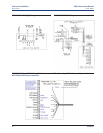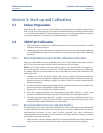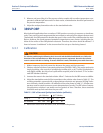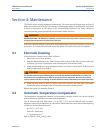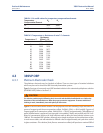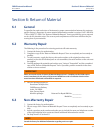
18 Start-up and Calibration
S
ection 3: Start-up and Calibration 389VP Instruction Manual
January 2013 PN 51-389VP
3.3
3.3.1
2
. Measure and record the pH of the process solution sample with a another temperature com-
pensated, calibrated pH instrument. For best results, standardization should be performed at
t
he process temperature.
3. Adjust the analyzer/transmitter value to the standardized value.
389VP ORP
Most industrial applications have a number of ORP reactions occurring in sequence or simultane-
ously. There can be several components that are oxidized or reduced by the reagents that are used.
Theoretically, the ORP potential is absolute because it is the result of the oxidationreduction equi-
librium. However, the actual measured potential is dependent on many factors, including the con-
dition of the surface of the ORP platinum electrode. Therefore, the sensor should be allowed 1-2
hours to become “conditioned” to the stream when first set-up or after being cleaned.
Calibration
1. Make a temporary electrical connection between the sensor and the instrument.
2. Obtain a standard solution of saturated quinhydrone (PN R508-160Z). This can be made quite
simply by adding a few crystals of quinhydrone to either pH 4 or pH 7 buffer. Quinhydrone is
only slightly soluble, but only a few crystals will be required (refer to Section 4.3.1 for an alter-
nate ORP standard solution).
3. Immerse the sensor in the standard solution. Allow 1-2 minutes for the ORP sensor to stabilize.
4. Adjust the standardize control of the transmitter to the solution value shown in Table 3-1. The
resulting potentials, measured with a clean platinum electrode and saturated KCl/AgCl refer-
ence electrode, should be within ±20 millivolts of the value shown in Table 3-1. Solution tem-
perature must be noted to ensure accurate interpretation of results. The ORP value of saturat-
ed quinhydrone solution is not stable over long periods of time. Therefore, these standards
should be made up fresh each time they are used.
5. Remove the sensor from the buffer, rinse, and install in the process.
CAUTION
The solution used during the following check is an acid and should be handled with care. Follow the
directions of the acid manufacturer. Wear the proper protective equipment. Do not let the solution
come in contact with skin or clothing. If contact with skin is made, immediately rinse with clean water.
TABLE 3-1. ORP of Saturated Quinhydrone Solution (millivolts)
pH 4 Solution pH 7 Solution
Temp °C 20 25 30 20 25 30
mV Potential 268 264 260 94 87 80



